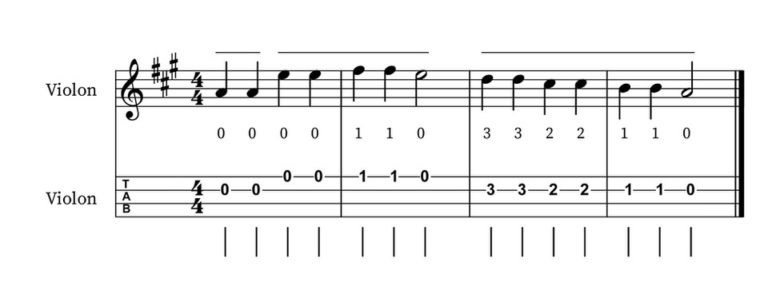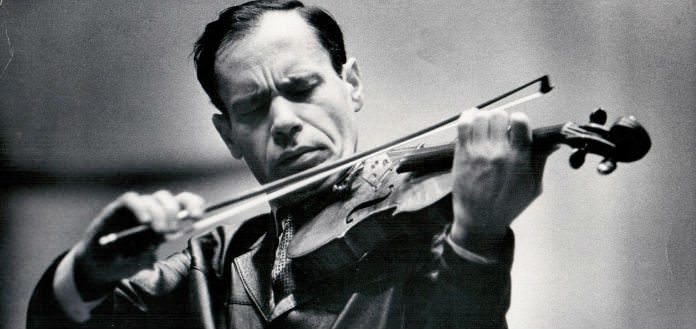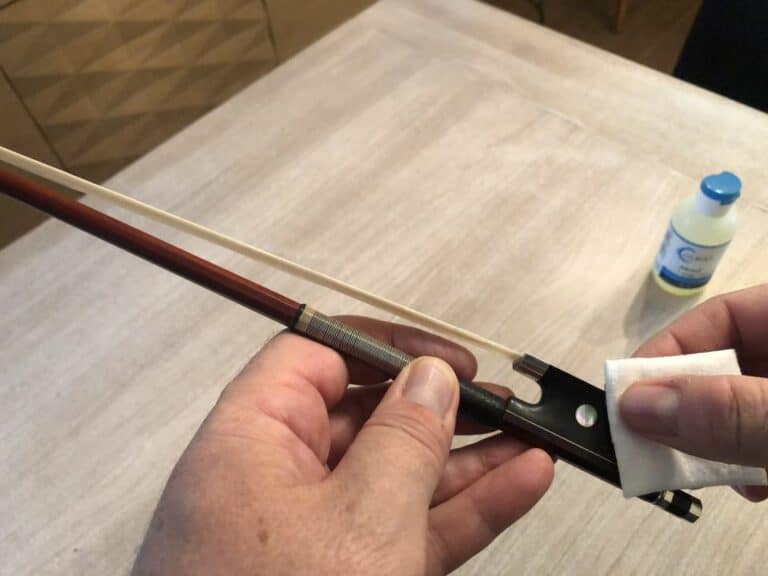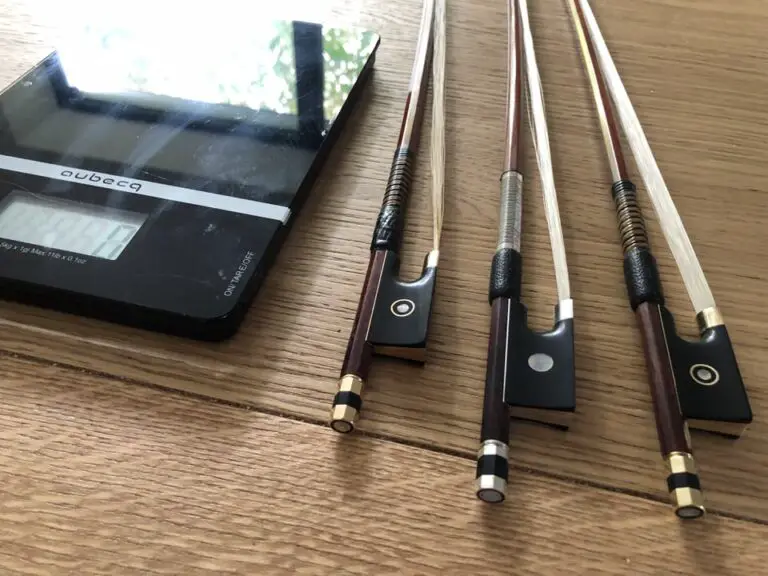Are the Violin Soundpost and Bridge Glued?
When we look at this incredible engineering feat, the violin, we just wonder how this awesome object can be held together. It is, at the same time, strong and fragile. It can go through time easily: violins from the XVIIth century still exist and are played today.
Is a violin glued? The neck is glued to the body; the fingerboard is glued to the neck; the upper part of the body is glued to the bottom part. The rest is held together by tension.
But what type of glued existed back then?
Can a glued violin be opened for repairs and withstand differences in hygrometry and temperature (dilatation) and vibrations?
Is a violin glued?
Yes, violins are glued.
The violin is roughly made of 70 parts. Most of them are glued together.
- The neck is glued to the body of the violin and is seldom taken apart for repairs.
- The fingerboard is glued to the neck but, on the other hand, can be taken apart to be changed if it becomes worn out due to years of playing. It is made of ebony, so it does not wear out quickly. It can be made flat again if not too damaged.
- The nut itself is glued to the fingerboard and can be changed as well if worn out.
- The body itself is glued together, the top part with the bottom part, that is to say, the back with the belly (soundboard). The rib, side of the violin, is also glued.
- The bass bar is glued on the soundboard and is one of the only important pieces for tone production that are glued. The only way to alter tone considering the bass bar is by removing it and changing it with a new one, or sometimes planing it or taking some wood out of it to make it thinner.
The volute and the scroll are not glued as they are carved out of the same piece of the neck.
The button which holds the saddle and tailpiece is not glued. The button is held in place by the tension of the strings. Without strings, it can be taken apart and, by the hole, it was in, a violin maker can have a look and check inside the violin without opening it. He or she can even insert a tool to do some work inside, for example, to adjust the sound-post or put it back in the correct position.
Are violin sound posts glued?
No, violin sound posts are not glued.
The sound-post is this small wooden cylinder found inside a violin. In English, it is a “post” for “sound” purpose; in other languages such as in French, it is called “âme” which means “soul”. So it is a crucial part of the violin construction and sound. It has some mystical implications, as well.
So what is the sound-post for, and can it be glued?
The strings of the violin apply a lot of down pressure on the body of the instrument. The upper part, the soundboard, has to be thin enough to vibrate properly. So, its construction and size are not strong enough to withstand such pressure and would be crushed alone under those conditions.
The sound-post serves then two purposes:
- it is a kind of column that withstands the roof of a cathedral by transferring the weight of the pressure to the ground, the back of the violin,
- sound wise now: this is an advanced topic! But in a nutshell, I can say that a given box or piece of wood vibrates to a given frequency. How can a violin vibrate to so many different frequencies? The soundboard is of different wood than the back; the soundboard is lighter and thinner, better to vibrate bass sounds, while the back is thicker and denser, thus allowing treble sounds to vibrate better. So the sound post transfers treble vibrations to the back of the violin, thus sits in the part of the body of the violin that vibrates more.
For all those reasons, the sound-post can’t be glued and is not glued. It is held in place by the tension of the strings.
Furthermore, it is the most common way to adjust the violin sound and tone. The violin maker can change its place by just a few millimeters with the help of a special tool through the openings of the F-holes. It serves the role of the tone knob of the acoustic violin. If the soundpost were to be glued, there couldn’t be any tone adjustment, and the body of the violin couldn’t vibrate properly, which would ruin the sound altogether.
Are violin bridges glued?
No, violin bridges are not glued.
The bridge holds the strings up in place, which allows the playing.
It serves different purposes:
- it gives a certain height to the strings;
- it determines how apart the strings sit from each other;
- it determines, by its height, the angle of the fingerboard;
- it transfers vibration to the soundboard of the violin.
For all the above reasons, the bridge differs according to centuries, fashions in the way of playing, or different violin makers styles.
It can slightly move due to the bow action and tuning the violin many times. So it can move and also bend. Of course, it is preferable to have a straight bridge. The bridge can be adjusted for tone and sound as well. It can wear out. Furthermore, it is not part of the violin itself strictly. That is why even great violins such as Stradivaris or Amatis have different bridges than original ones. Great violin makers throughout history have made their mark on great violins by associating their brand with great violins. They make great bridges, adapt them for a specific violin, and sign the bridge.
This is why the sound post is not glued. It is, again, held in place by the tension of the strings. Sometimes it sticks due to the soundboard varnish and because it seats in the same place for years, but it is not due to any glue.
If so many things are kept by tension, what are the risks?
That is why we should always be very cautious. When we change strings, we should take strings off one after the other and not all at the same time to put them back at the same time. Why? Because if we take all strings off, there is no more tension, and the button and saddle can move out of their place. The bridge will, of course, fall, and very likely, the sound-post will move if not fall. If the sound-post moves, we risk a bad sound; if the sound-post falls and we put strings back before we notice it, then very likely will we break the soundboard.
What kind of glue is used for a violin?
So we’ve seen that even glued parts of the violin have to be taken apart for repair purposes. So here is the thing: the violin has to be strong, make out of wood and go through centuries intact, and be taken apart anytime… Is that just possible?
The great history of violin making has met that challenge without modern glue. It could be said it is because they didn’t have modern glue.
Glued parts have to be un-glued; they must accept vibrations without blocking them; they must accept differences of temperature and hygrometry without breaking or cracking.
The glue, or hide glue, the violin makers use to make a violin is of organic nature. It is made out of animals: rabbit skin, bones or nerves, or a mix of them. It is reversible. That is to say, pieces can be taken apart during the life of the instrument for the necessary repairs. It is used when heated, with the inconvenience to work quickly and to heat the piece we need to glue. But in return, it sticks quickly, and some parts can then be glued without clamps. To make it, a violinmaker buys grains of glue or a thick powder of animal glue. He or she prepares the needed quantity for the day by diluting water and gluing 50/50 or up to 2/3 in some cases. Let the grains in water for at least one hour. Then heat up in a water bath to a temperature of 140 – 160 °F. When the scum forms, the glue is ready for use. The hot water from the water bath is really useful to clean up spills straight after gluing.
The old traditional glue can be diluted by alcohol or melted by heat. For example, to unglue the fingerboard, there is a tiny hole by which some alcohol can be poured to melt the glue slowly and remove the fingerboard eventually.
The two wooden parts have a play at a wood fiber level. That is why these micro-movements allow a violin not to crack under different hygrometry or temperature that leads to wood expansion. So old traditional glue can withstand wood expansion. It is a kind of “living” glue that adapts to its environments. Sometimes, in hot, humid countries, the soundboard can slightly unglue itself, which can be repaired quickly and easily by a violin maker. But glue is, in general, very strong, more robust than the wood itself.
If you want to know everything about your violin and how to take care of it, read my violin maintenance mega guide.






